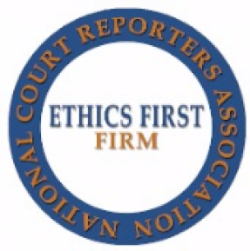Trial Presentation Professional Services to Enhance Litigation and Case Success
Trial Presentation Professional Services to Enhance Litigation and Case Success
Blog Article
Mesmerize the Jury: Important Elements of a Powerful Test Discussion
In the realm of lawful advocacy, the ability to astound a court is vital to the outcome of a trial (trial presentation). Crucial components such as comprehending the audience, crafting a compelling story, and grasping verbal and non-verbal communication are critical elements of an efficient presentation. The critical use of visual help can considerably boost understanding and retention of essential arguments. As these factors link, they develop a cohesive method that not only educates but additionally engages jurors on numerous levels. What details methods can truly change a conventional discussion into an unforgettable experience for the court?

Understanding Your Audience
Understanding your audience is a crucial aspect of effective trial presentation. An effective presentation depends upon the capability to comprehend the demographics, worths, and proneness of jurors. This understanding educates just how arguments are framed, evidence is presented, and sob stories are crafted, guaranteeing that the message resonates with the jurors on a personal level.
Research indicates that jurors come from varied histories and may have differing degrees of recognizing pertaining to lawful procedures. Additionally, recognizing the jurors' possible predispositions and life experiences enables the trial speaker to anticipate arguments and address problems proactively.
Reliable trial discussion additionally includes observing jurors' responses during the procedures. Involving with jurors as individuals instead than a cumulative system is essential in promoting a solid connection in the courtroom.

Crafting a Compelling Narrative
Crafting an engaging narrative is essential in leading jurors with the intricacies of a situation. A well-structured narrative not just simplifies detailed legal principles however also engages jurors on an emotional degree, making the information extra relatable and unforgettable.
This message should resonate with the jurors' worths and experiences, fostering a connection that goes beyond plain facts. This chronological technique can aid jurors follow the progression of occasions, stressing cause and impact.
Including human components-- such as personal stories or narratives-- can additionally boost the story's impact. These elements evoke empathy, enabling jurors to envision the effects of the situation on the real worlds. Additionally, employing a consistent theme throughout the presentation strengthens the primary debate, making it easier for jurors to keep important points.
Ultimately, a compelling narrative transforms a test discussion from a mere recitation of truths into an influential tale that astounds the court, urging them to ponder with both factor and feeling.
Making Use Of Aesthetic Help
Integrating aesthetic help into a test discussion can substantially improve jurors' comprehension and retention of details. Aesthetic materials such as charts, diagrams, pictures, and video clips can transform complex legal concepts and proof right into easily absorbable layouts. By engaging multiple detects, these aids enable jurors to picture the case's crucial components, making it much easier my response for them to adhere to along and grasp elaborate details.
In addition, well-designed aesthetic help can emphasize crucial points and highlight relationships in between different items of evidence. For circumstances, timelines can efficiently illustrate the series of events, while annotated pictures can clarify certain details pertinent to the situation. This not just aids in understanding however also strengthens the story provided by the lawyer.
Extremely complex or messy visuals might bewilder jurors and detract from the message. Ultimately, efficient aesthetic interaction can be an effective tool in convincing jurors and aiding them get to educated conclusions.
Mastering Verbal Interaction
Effective verbal communication is important in a test discussion, as it works as the key methods where attorneys communicate their disagreements and link with jurors. Understanding this ability entails clearness, persuasion, and you could look here engagement. Lawyers should verbalize their points clearly and concisely, avoiding lawful lingo that might puzzle jurors. Simplicity in language promotes understanding and assists jurors understand complex issues offered throughout the test.
Furthermore, tone and pacing dramatically effect how messages are received. A confident tone shares authority, while proper pacing enables jurors to absorb details without really feeling overwhelmed. Lawyers must also differ their singing inflections to emphasize key factors and preserve jurors' interest throughout the discussion.
Additionally, the company of verbal arguments is crucial. Structuring the narrative practically over here and coherently assists jurors comply with the lawyer's line of thinking, making it easier for them to preserve critical details. Using convincing techniques, such as narration, can also boost the emotional vibration of the arguments provided, thereby developing a more extensive link with jurors.
Eventually, understanding verbal interaction not only reinforces an attorney's instance but also promotes trust and connection with the court, considerably boosting the chances of a positive judgment.

Engaging With Body Movement
Nonverbal interaction plays an important duty in trial discussions, commonly communicating messages that words alone can not express. Body movement, encompassing motions, position, faces, and eye contact, significantly affects how jurors regard the integrity and sincerity of the presenter. A certain stance, with shoulders back and an open pose, can impart trust, while closed-off body movement may recommend defensiveness or uncertainty.

Faces need to show the feelings related to the instance, strengthening the narrative existing. A sincere expression throughout a poignant moment can evoke empathy and enhance the psychological appeal. Inevitably, mastering body movement is essential for reliable trial presentations, as it improves spoken communication and establishes an engaging presence that resonates with the court.
Verdict
To conclude, mesmerizing the court necessitates a tactical strategy that encompasses comprehending the target market, crafting an engaging narrative, utilizing visual help, understanding verbal communication, and engaging with body movement. Each component plays an essential function in developing an effective test presentation that resonates with jurors on both emotional and intellectual levels (trial presentation). By incorporating these elements properly, lawyers can considerably improve their capacity to encourage and affect court decision-making
Report this page